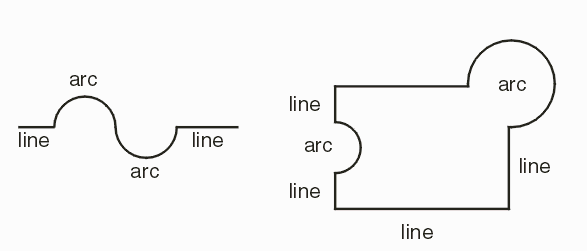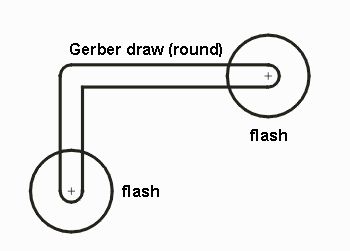Second Generation Boolean
Artwork has developed a second generation boolean - one that uses as input composite curves instead of polygons. The resulting output is also composite curves. What is a composite curve?

A composite curve is a collection of continuously connected lines and arcs. It may be open or closed. If open, it may have a width. The end cap is determined by the type of "aperture" used to draw the composite curve.
The second generation boolean (or circular boolean as we prefer to call it) uses composite curves as input instead of polygons. It also outputs composite curves.



